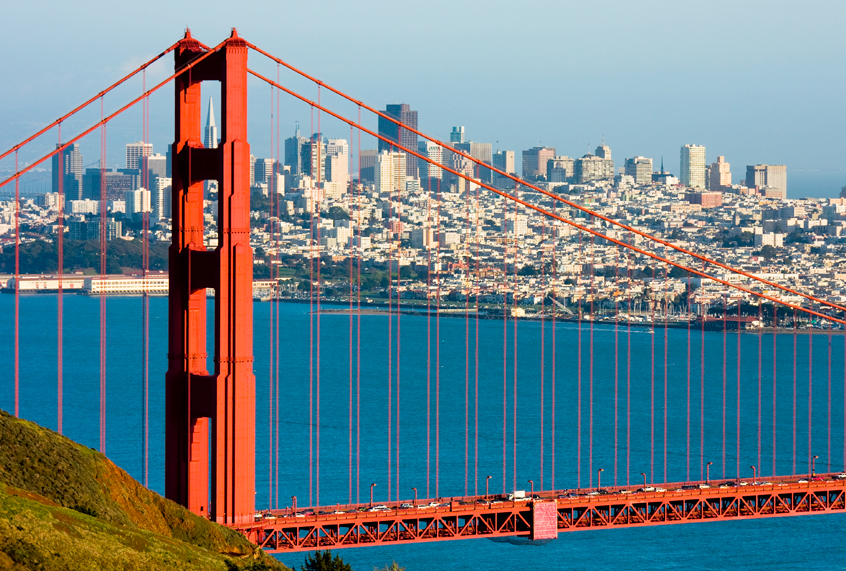A 4.4 magnitude earthquake struck the Bay Area at 2:39 a.m. this morning, causing no immediate damage besides interrupting sleep for residents in the area. The earthquake was originally categorized as a 4.7 magnitude before being downgraded to a 4.4. It centered on the Berkeley-Oakland boundary, CNN reported, but reportedly could be felt throughout the region for 5 to 10 seconds.
The California Governor’s Office of Emergency Services tweeted shortly after that there were “No reports of damages from the region at this time.”
No reports of damages from the region at this time. #earthquake #whatsshakincalifornia https://t.co/cSPgzjoMb5
— California Governor's Office of Emergency Services (@Cal_OES) January 4, 2018
According to the USGS, the federal agency that reports and records earthquake activity, a 4.4 magnitude earthquake means it could be “Felt indoors by many,” and “many awakened,” with “some dishes, windows broken.” While U.S. Geological Survey seismologist Robert Sanders told the Los Angeles Times that major damage isn’t expected for an earthquake of that magnitude, “there’s always a possibility of some minor damage to older structures in the area.”
But certainly, “Many awakened” was proven early this morning on Twitter, as residents grumpily tweeted updates about their sleep, home and any damages they saw.
I can’t remember the last time an #earthquake woke me from a deep sleep, which means it had to be 4+ and on the Hayward fault.
No damage, no car alarms, no dogs barking, kids still asleep. Just a quick shake, rattle and roll— Doug Sovern (@SovernNation) January 4, 2018
Earthquake in SF… nice little rumble.
— =ryan graves= (@ryangraves) January 4, 2018
Living in a high rise building when an earthquake hits is pretty crazy as you physically see the walls sway side to side…
— Adam Fletcher (@PezRadar) January 4, 2018
Did anyone else feel it? Just felt everything shake here in my house in SF and our building emergency alarm went off. #earthquake
— Riya (@loislane28) January 4, 2018
Felt a big jolt and rolling. Picture frames, etc, fell down. We are standing outside because the fire alarm went off. SFPD & SFFD is here now. #earthquake pic.twitter.com/8dMu58spUt
— Riya (@loislane28) January 4, 2018
That earthquake made me feel like I was in the poltergeist, making my bed shake.
This was me: pic.twitter.com/SopKm0jaOL— Maico 📸 (@MiguelB_94) January 4, 2018
Acting San Francisco Mayor London Breed tweeted this morning, “Many of us in #SF felt the 4.5 earthquake in S.E. Berkeley. There is no tsunami expected and departments are working on preliminary damage reports. Given the influx of calls to 911, please only call if you have an emergency.”
Many of us in #SF felt the 4.5 earthquake in S.E. Berkeley. There is no tsunami expected and departments are working on preliminary damage reports. Given the influx of calls to 911, please only call if you have an emergency. Follow @SF_emergency for more updates.
— London Breed (@LondonBreed) January 4, 2018
San Francisco Gate reported that 911 calls increased significantly in the aftermath of the earthquake, but the Department of Emergency Management said most residents were just calling in to see if an earthquake had indeed occurred.
Jesse Arreguin, mayor of Berkeley, tweeted some practical tips for residents who may be unsure about how to stay safe during an earthquake and its aftershocks. “In the event of an #earthquake while sleeping, stay in bed, cover you head with a pillow until the shaking stops. Today’s #Berkeley quake measured a preliminary 4.4 near Claremont in the hills. We will be monitoring any damage reports, and always be cautious of aftershocks,” he said.
In the event of an #earthquake while sleeping, stay in bed, cover you head with a pillow until the shaking stops. Today's #Berkeley quake measured a preliminary 4.4 near Claremont in the hills. We will be monitoring any damage reports, and always be cautious of aftershocks.
— State Senator Jesse Arreguín (@JesseArreguin) January 4, 2018
A geophysicist with the USGS Earthquake Science Center in Menlo Park told SF Gate that by 4:15 a.m. there had been no aftershocks, which is “a good sign. It may mean less likelihood of a larger earthquake to follow.”


